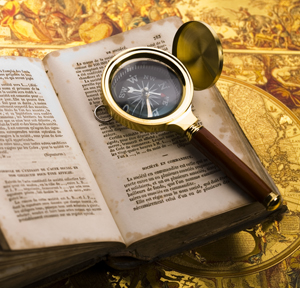Art
GUEST ARTICLE: Art Collections And The Law

This guest article examines some broad themes in the world of art collecting and investment, considering some legal angles.
This news organisation has carried a number of articles on
art investing and collecting in recent years and no wonder: art
is not just a potentially lucrative form of investment (albeit
with pitfalls and traps for the unwary) but also glamorous and
emotional. Collecting art isn’t, or shouldn’t, be just about
rates of return, volatility or yield. And with these
considerations of mind, it is always useful to take a look at the
broad issues in the field. (For other examples of commentaries
looking into specific areas and data, see here
and
here.)
Iris Harvey, who is a partner at Maitland, the fund
administration and advisory firm, has these thoughts on the
sector. As always, the editors of this news service don’t
necessarily agree with all the views expressed and invite readers
to respond. We are grateful for this contribution to debate.
Working with art is fascinating, even for lawyers. Art is
different from most other lifestyle assets. Works of art do not
have monetary value alone, but have cultural value, and as such
enhance the lives of everybody with whom they come in
contact.
If you are a collector, private or corporate, interested in
establishing a collection which would be of real cultural
interest, there will be significant legal issues to address.
Where a collection has been assembled and become more than
its constituent parts, a whole range of legal issues come into
play for those who own these unique and irreplaceable assets. The
collection will outlive those who have assembled it and will need
to be cared for and displayed in the interests of society as a
whole.
It will need to avoid the pitfalls which face all accumulations
of wealth, such as the claims of creditors, spouses and heirs, as
well as the ravages of taxation.
The legal issues are to some extent different at the various
stages in the life of a collection. At an early stage, a lawyer
would typically be involved in issues on the acquisition of works
for an individual collector. The collector and his art advisors
will provide the artistic judgement necessary to choose the truly
culturally significant items, where you would not really
look to your lawyer for advice. But there are issues where your
lawyer can help you. Reviews of title, provenance and
authenticity all have legal, as well as cultural, aspects and the
collector will need help in the process involved in purchasing,
transporting, exporting and importing the works. The lawyer will
finalise the contract, arrange for payment against delivery and
check that the applicable local and international heritage laws
are applied.
In the post-acquisition stage, the collector will typically
exhibit the works. This gives the lawyer the opportunity to see
the works, together with the public, as they go on display to
museums and galleries throughout the world. Contracts must be
negotiated, rules (such as the remittance rules in the UK
applicable to non-domiciled owners of works) have to be respected
and the works need to be protected from potential seizure. The
contracts need to contain provisions of curatorial standards to
be applied and of course there are issues of insurance while
being transported, and indemnities (often from governments) when
on display.
By its very nature, art is a highly illiquid asset. It has become
somewhat of a trend recently for collectors to use their art
works as collateral for loans from banks, thus creating liquidity
while they hold their art works as long-term investments. Lawyers
would be involved in documenting the loan arrangements which will
usually require the collector to deliver possession of the art
work to the bank or to a third party storage company and will
give the bank the right to sell the art work if there is a
default on the loan.
In the longer term, the collector could look for an institution
to hold the collection for generations. This can be as simple as
a sale or gift to a museum, which already exists and is able
to discharge the ownership and curatorial functions required as
well as achieving the objective of making the works available for
all.
Or, at a more complex level, the collection may be significant
enough to require a bespoke institution to hold the collection
which will endure with the collection into the future.
Bespoke museums
The long-term establishment of a bespoke museum, large or small,
is intriguing. Issues come into play such as the curatorial
standards to be applied, the governance of the institution, the
manner of funding and what the institution will need to do to
avoid cultural stagnation.
Then of course there are the interests of those who are
contributing the wealth. Family members for example may not
necessarily see eye-to-eye with the collector and they will have
rights in that regard.
Freedom of testation is not universally the standard. With any
accumulation of wealth, the tax issues, particularly inheritance
tax or estate duty, can be crucial. Capital gains tax must always
be considered on any disposal of art work – art can appreciate
significantly in value, which in tax terms means that capital
gains tax would be due on a disposal, although careful planning
may help to mitigate the liabilities which arise.
The information above has been written mainly in the context of
large collections of international significance but many of the
specific legal issues that arise apply equally to the small
collector with a few pieces.